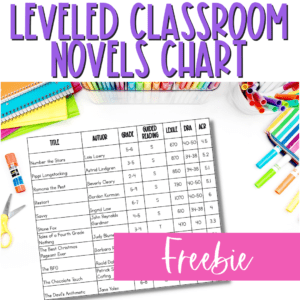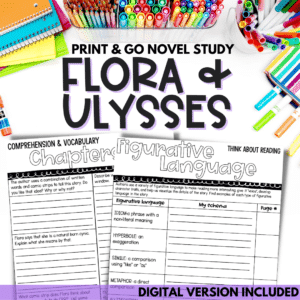Have you ever been in a classroom and noticed students independently working away on various tasks? Chances are, what you observed is Daily 5 in action. But is Daily 5 right for YOUR upper elementary classroom? The Daily 5 is an effective, research-driven approach to teaching literacy that has been widely adopted by elementary teachers looking for ways to engage students and increase their independence in reading. Let’s take a look at the five components of the Daily 5, as well as pros and cons to see if it’s the right fit for you and your students!
The Daily 5 is comprised of five components: Read to Self, Listen to Reading, Work on Writing, Word Work, and Read to Someone. Each element has its own unique purpose.
Let’s dive into each one a bit further.
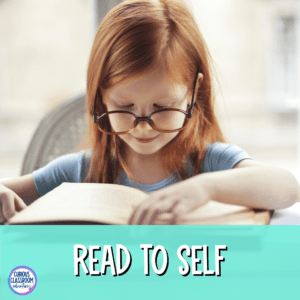
Read to Self
Read to Self encourages students to build stamina for reading and read independently for a certain number of minutes each day. This helps students become more confident readers as they are able to develop their own reading habits and preferences without being influenced by others around them. Since students are encouraged to choose their own books, this is a great way for students to develop a love of reading while improving their comprehension skills. Download this handy chart to help you guide students in picking a book that is a right fit for their reading level.
Work on Writing
Work on Writing provides time for students to practice writing, which can range from creative stories or poems, journal entries, or even research papers depending on the grade level and student’s individual interests.
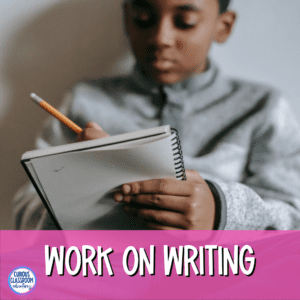
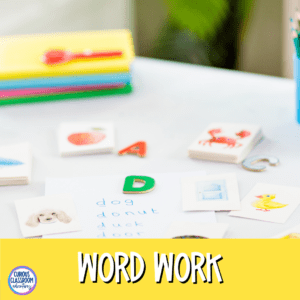
Word Work
Word Work allows students time to work independently with words—such as spelling lists or vocabulary words—to help strengthen their knowledge of language structure and conventions while developing fluency in writing and speaking tasks. Check out this blog for great word work activities for upper elementary classrooms!

Listen To Reading
Listen To Reading encourages students to listen actively as someone else reads aloud from a book or other material. This helps students improve their listening skills while providing exposure to different types of literature that may not be at their appropriate reading level yet. This is easily accomplished by keeping a classroom read-aloud going. Students love to hear their teachers read great stories aloud and most teachers love doing it. I’ve come across several students who graduated from my class years and years ago who still say this was their favorite time of the day!
Read to Someone
Finally, Read to Someone offers an opportunity for two students to read aloud together in order to increase comprehension of content-area texts or literature such as a current classroom novel study.
Since it is nearly impossible to fit all 5 of these tasks into the time allotted for reading instruction each day, I usually keep Listen to Reading during a transition time such as right after recess, and combine Listen to Reading with the science or social studies content reading that we need to get done have them use this time to re-read and discuss the comprehension questions for our classroom novel study, like this novel study for Flora and Ulysses that we are working on right now!
But is Daily 5 right for you?
Some major pluses for Daily 5 are that it encourages self-directed learning, builds motivation by offering students a sense of choice, and increases engagement levels in literacy activities. It’s a great way to personalize learning to each student’s needs and interests. It takes time to teach and establish stamina at the beginning of the year, but once it’s running, it allows the teacher to check in with students and give feedback.
Another pro is that this framework gives teachers time for one-on-one instruction when needed while still allowing other students to work independently. As students rotate through these tasks at about 20 minutes per task, it allows the teacher to pull together small groups to work on targeted reading instruction or reading intervention.
However, it can also be difficult for teachers who are new to this technique because it requires some planning ahead and implementation work upfront in order to be effective. I have had to put more thought into purposeful activities for students to do during independent writing and word work so that it doesn’t end up feeling like “busy work”. To make it truly effective for my upper elementary students I have limited the choice in Work on Writing to include choosing from prompts associated with the novel study we are doing.
Daily 5 also requires effective classroom management with so many different activities going on at one time. It takes consistency and classroom awareness to make sure that Read to Self and Work on Writing students are silently on task at the same time other students are working with art materials during Word Work or whispering with partners in Read to Someone.
Then add working with a small group of students while managing classroom expectations and it can sometimes feel like your attention is divided in too many directions. One idea to help manage behavior is to have the students help you create a teacher/student expectations chart for each task and model appropriate vs inappropriate behavior for each task.
So if you’re looking for an effective way for your upper elementary classroom students to become better readers then considering implementing the Daily 5 program could be beneficial! With careful planning and some stick-to-it-ness these five components can provide meaningful opportunities that will help your students shine and grow in literacy skills. Be sure to weigh both pros & cons before deciding if the Daily 5 framework best meets your teaching style and the needs of your unique classroom! Good luck!


